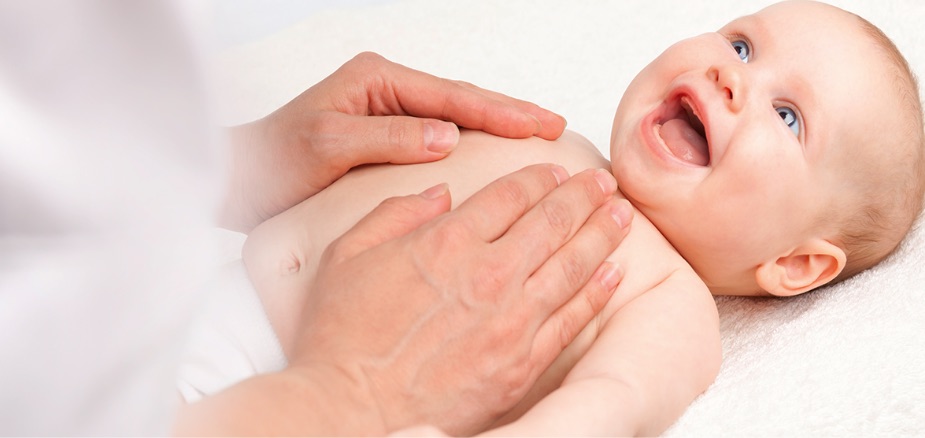Bifidobacterium,
BB-12®
- the world’s most documented probiotic Bifidobacterium

Bifidobacterium, BB-12® has been investigated in clinical studies and has been associated with gastrointestinal and immune function benefits.
Chr. Hansen Bifidobacterium, BB-12®
Bifidobacteria were discovered and isolated from the feces sample of a breastfed human infant in 1899.1 The Chr. Hansen probiotic strain named BB-12® originated from our collection of dairy cultures, and has since been used in infant formula, dietary supplements and fermented milk products worldwide.
BB-12® has been described in over 300 scientific publications; making the BB-12® strain the world’s most documented probiotic Bifidobacterium. More than 100 of these publications are from clinical trials that have investigated the impact of BB-12® in humans, ranging from newborn preterm infants to the elderly, across various areas of health.


In clinical studies, Bifidobacterium, BB-12® has been associated with beneficial effects across different areas of health
Infants and children
Associated with reduced incidence of acute diarrhea,2 softer and more frequent bowel movements,3 and fewer and shorter episodes of diarrhea.4
Associated with a significant reduction in excessive crying and fussing in in infants with colic.5
Associated with a reduced frequency of respiratory infections.6, 7, 8
Associated with reduced severity, extent and subjective symptoms of atopic eczema in infants with inflammation/atopic exczema.10
Adults
Associated with reduced levels of salivary Streptococcus mutans.11
Defecation frequency†
Associated with increased defecation frequency in adult populations with infrequent bowel movements,12, 13 and in an elderly, frail nursing-home population.14
Immune function*
Associated with a reduction in total cholesterol and LDL cholesterol in patients with type 2 diabetes.16

Safety
BB-12® is safe for human consumption and has been granted QPS17 (Qualified Presumption of Safety) status in Europe and been the subject of a GRAS (Generally Recognized as Safe) notice to the US Food And Drug Administration.18 It has been tested in clinical studies at level up to at least 100 billion CFU/day (colony forming units), with no adverse events.
BB-12® is a registered trademark of Chr. Hansen A/S
The article is provided for informational purposes regarding probiotics and is not meant to suggest that any substance referenced in the article is intended to diagnose, cure, mitigate, treat, or prevent any disease.
At Chr. Hansen, our strains are backed by science. All of our probiotic strains are supported by clinical documentation. Learn more about the beneficial effects our strains have on different health areas.
References Open Close
1. Jungersen, et al. The science behind the Probiotic Strain Bifidobacterium animalis subsp. lactis BB-12®. Microorganisms. 2014;2:92-110. (PubMed)
2. Saavedra JM, et al. Feeding of Bifidobacterium bifidum and Streptococcus thermophilus to infants in hospital for prevention of diarrhoea and shedding of rotavirus. Lancet. 1994;344(8929):1046-9. (PubMed)
3. Vlieger AM, et al. Tolerance and safety of Lactobacillus paracasei ssp. paracasei in combination with Bifidobacterium animalis ssp. lactis in a prebiotic-containing infant formula: a randomised controlled trial. Br J Nutr. 2009;102(6):869-75. (PubMed)
4. Weizman Z, et al. Effect of a probiotic infant formula on infections in child care centers: comparison of two probiotic agents. Pediatrics. 2005;115(1):5-9. (PubMed)
5. Nocerino R, et al. The therapeutic efficacy of Bifidobacterium animalis subsp. lactis BB-12((R)) in infant colic: A randomised, double blind, placebo-controlled trial. Aliment Pharmacol Ther. 2019. (PubMed)
6. Taipale TJ, et al. Bifidobacterium animalis subsp. lactis BB-12 in reducing the risk of infections in infancy. Br J Nutr. 2011;105(3):409-16. (PubMed)
7. Taipale TJ, et al. Bifidobacterium animalis subsp. lactis BB-12 in reducing the risk of infections in early childhood. Pediatr Res. 2016;79(1-1):65-9. (PubMed)
8. Rautava S, et al. Specific probiotics in reducing the risk of acute infections in infancy--a randomised, double-blind, placebo-controlled study. Br J Nutr. 2009;101(11):1722-6. (PubMed)
10. Isolauri E, et al. Probiotics in the management of atopic eczema. Clin Exp Allergy. 2000;30(11):1604-10. (PubMed)
11. Caglar E, et al. Short-term effect of ice-cream containing Bifidobacterium lactis Bb-12 on the number of salivary mutans streptococci and lactobacilli. Acta Odontol Scand. 2008;66(3):154-8. (PubMed)
12. Eskesen D, et al. Effect of the probiotic strain Bifidobacterium animalis subsp. lactis, BB-12®, on defecation frequency in healthy subjects with low defecation frequency and abdominal discomfort: a randomised, double-blind, placebo-controlled, parallel-group trial. Br J Nutr. 2015;114(10):1638-46. (PubMed)
13. Uchida K, et al. Effect of fermented milk containing Bifidobacterium lactis BB-12 on stool frequency, defecation, fecal microbiota and safety of excessive ingestion in healthy female students. Journal of Nutritional Food. 2005;8:39-51.
14. Pitkala KH, et al. Fermented cereal with specific bifidobacteria normalizes bowel movements in elderly nursing home residents. A randomized, controlled trial. J Nutr Health Aging. 2007;11(4):305-11. (PubMed)
15. Rizzardini G, et al. Evaluation of the immune benefits of two probiotic strains Bifidobacterium animalis ssp. lactis, BB-12® and Lactobacillus paracasei ssp. paracasei, L. casei 431® in an influenza vaccination model: a randomised, double-blind, placebo-controlled study. Br J Nutr. 2012;107(6):876-84. (PubMed)
16. Ejtahed HS, et al. Effect of probiotic yogurt containing Lactobacillus acidophilus and Bifidobacterium lactis on lipid profile in individuals with type 2 diabetes mellitus. J Dairy Sci. 2011;94(7):3288-94. (PubMed)
17. EFSA Panel on Biological Hazards (BIOHAZ). Statement on the update of the list of QPS-recommended biological agents intentionally added to food or feed as notified to EFSA 3: Suitability of taxonomic units notified to EFSA until September 2015. EFSA Journal. 2015;13:4331.
18. Food and Drug Administration. GRAS Notice Inventory > Agency Response Letter GRAS Notice No GRN 000049. 2002.
Clinical
studies
Learn how to review the evidence when considering probiotic strains and effects
Our
strains
Read more about some of the world’s most documented probiotic strains and their diverse, beneficial health effects



